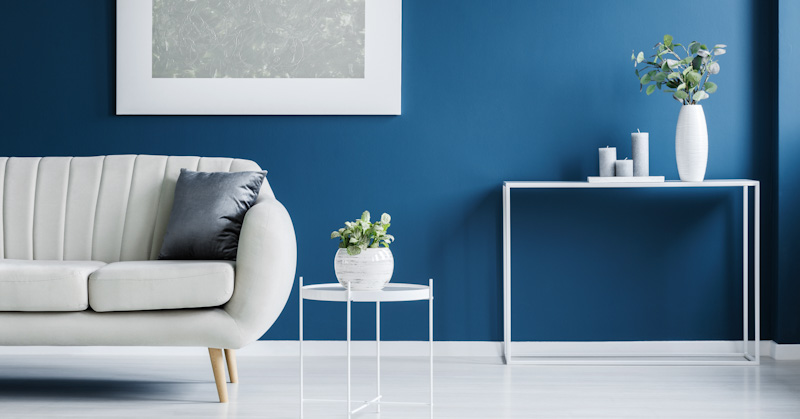Enhance Your Interior Layout With Comprehensive Color Assessment
The assimilation of color appointment into interior design provides an one-of-a-kind chance to fine-tune and raise the emotional and visual vibration of a room. By engaging with a seasoned shade consultant, you can navigate the complexities of color choice, making certain that your selections not only complement architectural features however likewise reverberate with individual design and psychological impact.
Benefits of Shade Consultation

Furthermore, shade appointment help in making the most of all-natural light and enhancing spatial assumption. Lighter hues can make a room appear more extensive, while darker tones produce an intimate setup. Cleveland Metro Painting Specialists. This tactical application of color can dramatically influence the general setting of any type of indoor area
Furthermore, specialist experts have a detailed understanding of present trends and classic classics, ensuring that the chosen shades will certainly continue to be enticing with time. This insight can conserve customers from costly redesigns in the future. Shade appointment equips customers by giving them with a clear vision and instructions, cultivating confidence in their style options and eventually leading to a more satisfying and effective indoor style outcome.
Recognizing Shade Psychology
The relevance of color psychology in indoor layout can not be overstated, as it explores the emotional and emotional effects that various tones can evoke in people. Colors can influence state of mind, habits, and also efficiency, making them a crucial consideration in any kind of layout task.
As an example, warm colors such as red, orange, and yellow are frequently related to power and heat. They can stimulate feelings of enjoyment and comfort, making them appropriate for social spaces like living rooms or kitchen areas. Alternatively, cool shades like blue, green, and purple tend to stimulate calmness and serenity, making them suitable for bed rooms or reflection locations.
Additionally, making use of neutral tones can produce a well balanced setting by allowing the bolder shades to stand out without frustrating the senses. Comprehending these mental influences allows designers to produce areas that not only look aesthetically pleasing yet also promote psychological well-being.
Including shade psychology into indoor design includes a thoughtful option of hues tailored to the desired function of each area, eventually improving the overall experience for its occupants. This awareness is important for accomplishing a unified and practical indoor atmosphere.
The Color Wheel Described
It consists of primary colors-- red, blue, and yellow-- that can not be developed by blending other colors. Tertiary colors result from mixing a key and an additional color, leading to shades such as red-orange and blue-green.
The shade wheel assists developers comprehend the partnerships between shades, including corresponding, similar, and triadic plans. Complementary colors, located contrary each other on the wheel, develop vibrant contrasts that can invigorate a room.
Using the shade wheel in indoor layout not just boosts visual allure but also evokes certain feelings and environments, making it a critical reference for color appointment. Understanding these connections eventually equips developers to develop spaces that are both visually exciting and practical.
Selecting the Right Palette
A well-chosen color scheme can link a space, enhance its features, and evoke desired emotions. Various rooms serve varied features and call for palettes that reflect their desired usage; for circumstances, relaxing shades such as soft blues or environment-friendlies function well in bedrooms, promoting relaxation.
Next, consider the natural light readily her comment is here available. Light can drastically modify exactly how shades show up, so it is necessary to assess the space at various times of the day. Additionally, take into consideration existing architectural aspects and home furnishings. A harmonious scheme ought to enhance these features, producing a natural appearance throughout the space.
When picking shades, utilize the 60-30-10 policy, which recommends that 60% of the room ought to be a leading shade, 30% a second shade, and 10% an accent color. This ratio makes certain equilibrium and aesthetic passion (Cleveland Metro Painting Specialists). Example shades on the walls before devoting, as this enables you to see just how the colors interact with one an additional and the overall setting they create in your indoor design job.
Working With a Shade Consultant

When collaborating with a shade professional, the procedure usually starts with a first consultation. Throughout this meeting, you'll discuss your vision, preferences, and the existing aspects in your room. The professional will evaluate your demands and may recommend certain shade schemes that straighten with your objectives.
After developing an instructions, the professional will offer samples and aesthetic help to help you envision the suggested color design. This action is crucial, as colors can appear in different ways under differing lighting problems.
Additionally, a shade specialist can guide you in picking corresponding furnishings, art work, and accessories to harmonize with your picked combination. By collaborating closely, you can attain a refined aesthetic that raises your interiors and creates a welcoming environment. Ultimately, the know-how right here of a color consultant can significantly boost the general influence of your layout project.
Conclusion
In summary, extensive shade appointment offers as an important tool for improving interior layout. By leveraging specialist expertise of color psychology and spatial dynamics, a tailored color scheme can be created to evoke particular feelings and create a harmonious environment.
By engaging with an experienced color expert, you can navigate the intricacies of color choice, guaranteeing that your choices not only complement architectural attributes but also resonate with personal style and psychological impact. It comprises primary colors-- red, blue, and yellow-- that can not be created by mixing other colors.The shade wheel aids developers grasp the partnerships between colors, consisting of corresponding, comparable, and triadic schemes.When selecting shades, use the 60-30-10 guideline, which suggests Visit Website that 60% of the room must be a dominant color, 30% a secondary shade, and 10% an accent shade. By leveraging professional understanding of color psychology and spatial dynamics, a tailored color palette can be developed to evoke particular emotions and create an unified atmosphere.